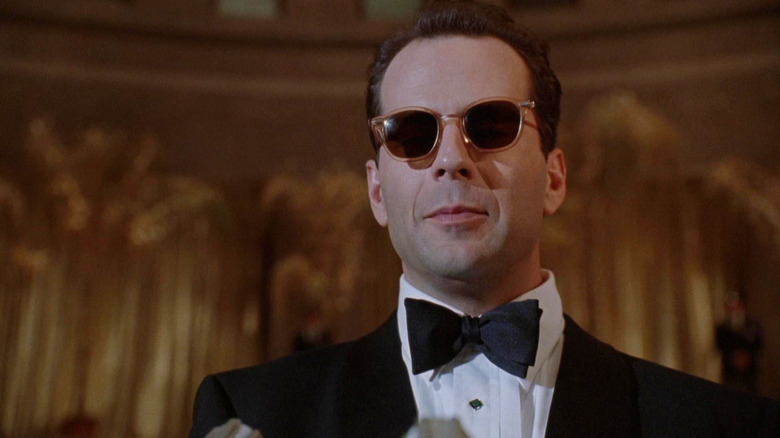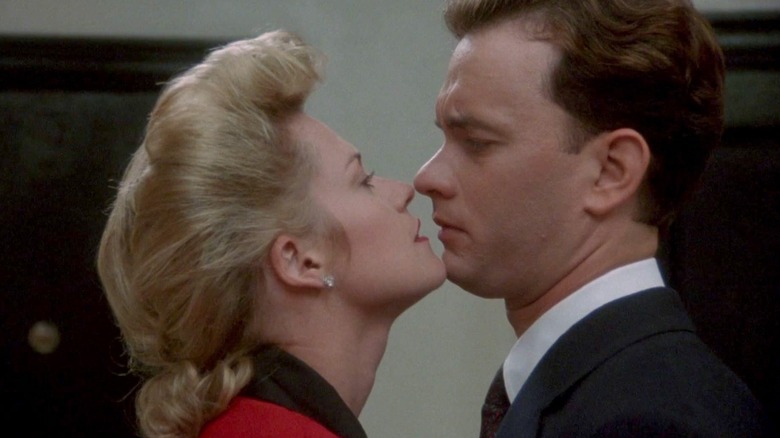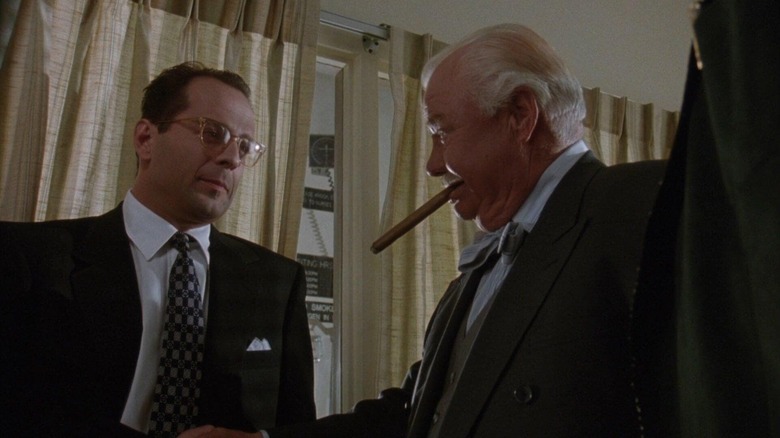Tom Wolfe’s social satire “The Bonfire of the Vanities” was revealed in 1987 and was constructed as a wry, readable send-up of New York’s excessive society on the time. Its story follows a callow yuppie named Sherman McCoy who, whereas out on a drive together with his mistress Maria, by chance head into the Bronx. A sequence of small misunderstandings ends in Maria taking the wheel and by chance working over a Black teenager, Henry Lamb, then fleeing the scene. The accident is roofed by a burned-out tabloid reporter named Peter Fallow, whose reporting results in McCoy’s arrest. The majority of the narrative then focuses on McCoy’s trial. Nobody is wholly good in “Bonfire,” and many of the characters are largely unhealthy.
The e-book was infamously tailored right into a function movie by Brian De Palma in 1990, and, boy howdy, is it unhealthy. Each character is miscast, with Tom Hanks taking part in Sherman McCoy and Melanie Griffith taking part in his mistress. In the meantime, Bruce Willis performs Peter Fallow, who’s not a burnout; as a substitute, he is a dandyish movie star drunk who barely appeared invested within the story. The movie additionally options Kim Cattrall as McCoy’s spouse, Morgan Freeman because the decide within the case, and an uncredited F. Murray Abraham because the District Legal professional.
De Palma’s “Bonfire” was a large bomb, grossing solely $15.4 million on the field workplace on a price range of $47 million. It was additionally roundly panned by critics, with some evaluating it to the “Police Academy” motion pictures. It at the moment has a 15% approval score on Rotten Tomatoes and was nominated for 5 Razzie awards. The manufacturing was additionally infamously troubled, and creator Julie Salamon wrote a well-known e-book, “The Satan’s Sweet,” all about how all the things fell aside.
In fact, the movie’s solid has since labored very laborious to distance themselves from the venture. In 1996, Willis spoke to Playboy Journal (transribed on the interviewer’s web site) concerning the film, stating that “Bonfire” is the one movie he would by no means need to do once more.
Bruce Willis thinks he is aware of what went improper with The Bonfire of the Vanities
Willis had a number of points with “Bonfire.” Firstly, he thought that it was the sufferer of prejudice. Many individuals had learn the unique novel, and Willis resented the pundits who declared the movie was no good earlier than having even seen it. That type of unhealthy religion take, Willis felt, stored individuals away. There was no strategy to earn again the viewers’s belief if it was launched “pre-reviewed,” so to talk. To cite Willis immediately:
“It was stillborn, lifeless earlier than it ever bought out of the field. It was one other movie that was reviewed earlier than it hit the display. The important media did not need to see a film that solid the literary world in a shady gentle. Within the critiques, they had been recasting the movie. They had been saying, ‘If we had been doing this movie, we might solid William Damage as a substitute of Tom Hanks,’ or no matter. Properly, should you had been doing the movie, then which may imply you had some f***ing expertise and knew find out how to inform a narrative as a substitute of writing about what different persons are making an attempt to do.”
Critics, in fact, typically hear this chorus (“Are you able to do any higher?”) once they write up a nasty evaluation. One can see how Willis can be bitter, although, as “Bonfire” did have excessive expectations to fulfill, and poor casting led individuals to consider that it is likely to be horrible. It would not be till critics truly noticed it, in fact, that their suspicions can be confirmed. “Bonfire” is certainly fairly horrible. The movie performs with broad archetypes and tries to make a panicked hero out of a depressing millionaire.
Finally, although, Willis agreed with the critics.
Bruce Willis felt he was miscast in The Bonfire of the Vanities
Readers of Wolfe’s e-book had very sturdy opinions as to who ought to be solid in a movie adaptation, and neither Willis nor Hanks was on anybody’s listing. Additionally, as a result of the e-book was so sardonic and merciless, it robbed a traditional movie viewers of a standard hero. Willis felt these had been the 2 greatest contributing elements to the movie’s huge failure. He continued:
“However they had been proper. I used to be miscast. I do know that Tom Hanks thinks he was, too. The film was primarily based on an awesome e-book. However one drawback with the story, when it got here to the movie, was that there was nobody in it you possibly can root for. In most profitable motion pictures, there’s somebody to cheer on.”
It isn’t an excellent story when the climax of the movie is a heroic scene whereby a vapid yuppie throws his mistress below the bus.
Even De Palma got here to agree with the critics. In a (sadly now-deleted) interview he carried out with Empire Journal in 2008, the filmmaker admitted his deadly mistake was making Sherman sympathetic when the character ought to have been an antihero at greatest. He felt the fabric warranted a extra cynical method, nonetheless, and did not have the temerity to do this in 1990. He even agreed that Hanks was miscast, feeling now that John Lithgow (whom De Palma had made “Elevating Cane” with) would have been a more sensible choice.
And, in fact, there was a messy, messy manufacturing to cope with, which included a number of studio tinkering and unhealthy, last-minute choices. Studying “The Satan’s Sweet” might present little bit of perception into the way in which Hollywood productions can go horribly improper.




